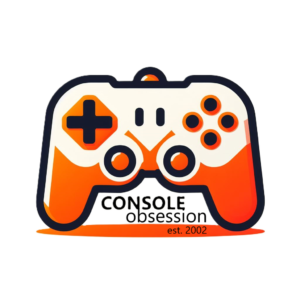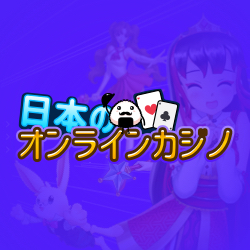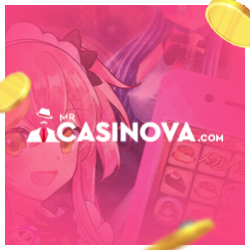The World Ends With You DS Review
During my late teens I had spiky blue hair, baggy jeans, a wallet chain and an almost endlessly attached pair of headphones complete with anti-social behaviour. Possibly my affinity to the hero of the game is a little too high, but then again, I’ve never suffered from amnesia, well other than the odd night out here and there. Who knows? Maybe I used my normally suppressed powers to direct psychokinetic energy and destroy the terrors of Aberdeen. Or maybe I just waltzed with Aftershock once too often and ended up being dismissed early from work……
Anyway, Neku, the protagonist of The World Ends With You (TWEWY), while being a humorous comparison to my teenage-self, his behaviour with other people is not. He can be quite an abrasive chap to spend time with and could be the most off putting aspect of the game; not exactly the most social type Neku is reclusive and sometimes even a hate filled misanthrope. Even though this is par the course for some angst ridden teenage persons not so much your lead for a JRPG. Well I say, does this game do things a bit differently? Why yes it does!
Set in modern day Tokyo, you take on the role of the manga haired dolt described above. It seems he has ended up in some strange alternative reality of the hip shopping district with a black pin (or badge as we would say) granting psychic powers, a timer on his hand and is apparently invisible to the general population. Within minutes he is attacked by a group of tree frogs with tribal like patterns for legs, and is forced to team up with a partner or face being destroyed by the mysterious hooded “Reapers”. So without further a do Neku and his plucky partner Shiki are thrown into a world of danger, complex rules, puzzles and intense combat, and you’re in for the ride.
The game possesses a very distinctive visual style reputably inspired directly by the Shibuya shopping district and its youth culture. Nothing in the game is understated visually; characters in particular are massively over-styled but in a more teenage anime fashion, think more Neon Genesis Evangelion than Naruto or Bleach. Mind you, if you played the original Kingdom Hearts, developed by the same team, you’ll know what I’m talking about. This naturally extends out into the game world in which these larger than life people inhabit. Throngs of people dressed on the edge of fashion, toe to brow. Huge invasive video screens and billboards display adverts for the latest gear as the busy main streets give way to hidden side alleys, perfect hunting grounds for the latest, hottest range of rags and social fashion. All of this accompanied by a massively varied soundtrack (tracks of which can be bought in shops and played through your phone menu) essentially becoming the heartbeat of the game, pulsing to the atmosphere and energy of the vibrant visuals. Ranging from crazy J-pop to hip hop, punk to breaks it is a rare treat for the ears in a game never mind a DS title and is worthy of a review in its own right.
Fantastic presentation aside, the game is driven largely by clever cliff hangers and tightly written story twists. I’d be doing you all a gross disservice by divulging any further details; however it is needless to say that from the gripping introduction to the first battle you’ll be hooked. The story surprisingly tackles issues such as self-identity, death, trust and the meaning of life, and it doesn’t make a botch job of it either. Character development is fleshy enough despite Neku’s somewhat predictable arc. However, the complexity of the plot more than compensates, as the writing is witty and intelligent. The game has some deeply touching moments and delivers well enough to be emotionally engaging; in this regard TWEWY is one of the finest I have played. It is rare enough to find a game that does not neglect this range of human experience, never mind one that does it well.
However, despite its strength in storytelling and other numerous endearing qualities it is ultimately a train ride from start to finish. There are various side-missions to complete which tend towards the old grind sandwich of collecting items to gain yet more powerful items, and that is about it. Having said that on completion of the game there are various challenges to unlock hidden content that give more insight to key characters, mysteries and concepts divulged through the story. At times it does feel that you are just wheeling your cross-dressing hero from one conversation to the next, which is flinchingly accurate as none of your actions in the game will affect the outcome of the story or even the side-quests. However, there is a large grey-grey decision to be made at the end of the game, which is quite apt as it reflects on the story in a rather satisfying self-conscious fashion.
The story and visuals not the only reasons for TWEWYs unique identity though. It is an odd hybrid with elements spliced in from RPGs, adventure games, fighting games and even point and click adventures. This eclectic collage if not remarkable on its own merits then proceeds to break your preconceptions and then provides an impressive level of depth. Just as you’ve got the hang of a new concept, the game layers on another complexity; it’s quite a head-spinning experience. For example, not only is Shibuya the funky backdrop for the game, it is also the dictator for your performance in combat. Each district has its own fashion trends, ornate corsets might be in for one area while large gold chains are out and sharp Yakuza style suits are tolerated. Depending on the clothes Neku and his partner wear they’ll receive boosts or nerfs; that’s before you start to consider that the pins you use in combat can actually change the fashion trends in the area, and in turn are affected by it. Yeah, exactly.
Then there is the rare use of the internal clock of the DS, which not only is functionally displayed within the UI but is used to aid the player. When starting up the game it takes note of how many days (up to 7) you have been stuck in reality, and adds experience to your pins accordingly. Not a huge amount granted and the multiplier hits its peak after a day or so but it is undeniably groovy and useful to boot. The game really does encourage you to be interacting with it on a day to day basis and even to keep your DS with you at all times. You see, it also harnesses the Wi-Fi system in a frankly even cooler way. Sure, you can swap and buy items from a buddy, but if you activate Mingle mode the DS goes to sleep and searches for signals. Mainly other DS’s but it also picks up other devices and grants you experience. It’s not just a gimmick, I often encountered a signal, labelled “Alien” (maybe a PSP?) which would give me whooping high points on my way home from the lab each day. We have a dual purpose feature here, both a gameplay addition and an interesting way of furthering the social theme of the game into the real world. Neat? I think so. I wonder what anti-gamers would think of that?
The interesting game mechanics and the sly commentary on modern life (in Tokyo at least) doesn’t stop there. The black pin Neku receives at the start of the game allows him to use his psychic power to read the minds of the unknowing public milling about the streets. This is achieved by touching the black pin, a growing sphere then extending from Neku quickly enveloping the screen. As it touches people, thought bubbles pop up with a snappy summary of their thoughts the details of which can be accessed through a quick tap. Mostly it’s about something unimportant – for you at least – such as a girl thinking about the hot guy they spotted in a shop, who they’re now stalking or a stressed out student worrying about a looming essay deadline.
They do tend to repeat themselves after playing the game for many hours but it’s a great alternative to walking about and engaging people separately. Mainly it is used as a mechanic to extract vital clues and ultimately to gain an insight to the personality of the individuals around you: a key concept in the game. However, it goes deeper than that. Later in the game it is also possible to implant ideas into peoples heads using memes collected from others. This serves as an interesting puzzle system to change their thought process or even perform certain actions. This commentary of modern society is evident throughout the game and is anything but shallow.
You spend a fair bit of time guiding Neku and his partner around Shibuya using the stylus (or D-pad if you prefer), talking to characters, organising items in your inventory, playing Tin Pin (arcade side-game) and solving puzzles. This is effortlessly achieved by an excellent marriage between responsive touch screen controls and great UI. You will find yourself hunting out the best new clothes and stopping for a bite at the local noodle bar with ease. Oh that’s a point, food. Food is used to boost your characters stats but you can only digest a set amount each day, and must fight to work it off! Thus as there is only a finite number of days in the game you must be careful of what you eat or risk developing your character in the wrong direction.
This is all handled through the phone menu which is punctuated with graffiti style titles while the pins used in the battle system are abstract tags relating to the in-game top clothes designers and powers they give. There is a good sense of humour particularly with the clothing descriptions making the purchase of new threads an amusing business. Despite this, thankfully very little time need be given to item management as items can not be sold. Instead all funds must be collected through defeating enemies and trading in pins that they drop directly for cash. This streamlined item collection means you can focus on what really matters: combat.
Combat in TWEWY is inspired and frantic with a steep learning curve which is ultimately rewarding. Action packed battles are real-time using a combination of D-pad, touch screen and mic inputs to control 2 characters (one per screen) delivering an exciting but strategic experience. No random encounters here with that same mangy wild zombie dragon you already fought 200 times. No horrible, frustrating races for the edge of the screen low on health, mana and chocolate biscuits before being attacked by a giant mutant bee that promptly stings your party to death. Other than a few boss battles, you have complete control of “when” and “where” you put up your mitts.
Shibuya is populated by animalistic critters known as “Noise” which can be fought by scanning with the black pin. You can select enemies to fight and even later on gamble on taking on up to 5 groups by daisy chaining battles for added bonuses. Once in the battle Neku is located on the bottom screen controlled by the stylus and his partner on the top using the D-pad for input. Both characters share the same health bar and are fighting the same enemies with shared health, however the phase is different. This means enemies can be performing different actions on the screens. Successful combo hits on one screen cause a “Light Puck” to move to the other, granting damage multipliers with each successful relay.
While Neku’s partner can fend for themselves, Neku needs special pins to allow for a comprehensive range of attack, defence, status boosts and nerf actions. This combination of pins (there are over 300) is determined before combat where you must take into account both the top fashions and enemies in the area; then plan different combos by placing pins into up to 6 slots or as sub-slots (activated by holding the R button). For example: “Burning Cherry” depicts a pair of cherrys, grinning shark like, which is used to launch bouncing flaming orbs. Another, “Splish Splash Barrier”, shows a pensive goldfish in a bag used to create a water shield to restore HP and ward of attacks. And my personal favourite, “Gimme Dat Sheep!” pictures a cheeky sheep popping out of a black hole, used to form – you guessed it – a black hole to suck enemies in with. All of the pins require specific actions to activate in battle including: fast tapping of the target, slashing, drawing circles and even shouting (or blowing when in public) into the microphone. Pre-combat planning to link these actions into a series of seemless movements to cause maximum damage, is well rewarded as you are graded on time and damage to determine the experience and items you collect.
On top of this, Neku’s partners can earn stars during battles which are gained by completing combos on enemies, no easy task when you have to consider faints and blocks……but ultimately it pays off by powering up a super attack using both characters called a “Fusion” attack.
/me exhales.
Indeed the combat system is far from straight forward, requiring planning, dexterity and top it off, simultaneous control of two characters. Blasting flames around the touch screen, while completing a random direction based combo, is much like stroking your stomach and patting your head at the same time; but once mastered is immensely satisfying. I’d be stupid to presume most people will get the hang of it and is far more likely to be a huge divide, much like those darn Magic Eye books – you either get it or you don’t.
However, not all is lost if you cannot; you can let the AI take over which will get you by on the lower difficulty levels. In fact the game is very forgiving on the combat front, letting you change both the difficulty and your level on the fly between fights, so it can be as easy as sucking a smoothie or as steak chewingley challenging as you wish. This accommodation of varying player skill level is praiseworthy and proves that games need not be dumbed down to reach a larger audience. Don’t get me wrong though, the combat can be a really challenging, teeth grindingly difficult experience for those that are prepared to learn, but suitably rewarding. It is an exhilarating and addictive system which could only have been achieved on the DS.
The overall experience is dizzying. TWEWY is just fizzing away with inventive and innovative ideas; it’s a shame we don’t see more games with this much spark and ambition never mind on the DS. There is so much to this game, from item collection to the frantic dual-screen combat, it is all flawlessly and beautifully integrated with funky visuals, catchy music and a superb story. The only downside is that the game is complex; the first few hours will be a tough hurdle to overcome for some. However, I assure you it is worth your time. This is a truly brilliant game and I can’t recommend it higher. In fact, I’ll bet my Tight Red and Black Striped Jeans (Def +4, HP +29, Bravery Req. 75, Ability – Reduces mobility but increases visibly with a percentage chance of stunning enemies) that in years to come, it will be remembered as a classic.
9/10







